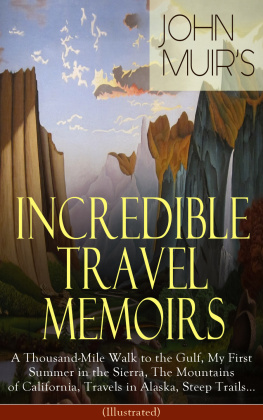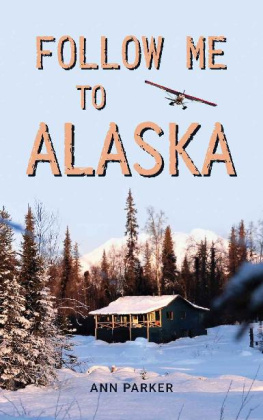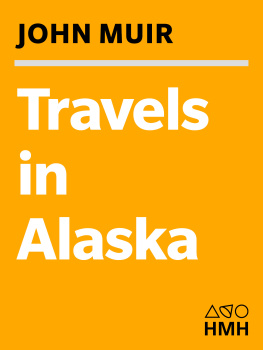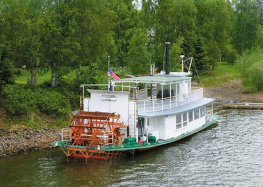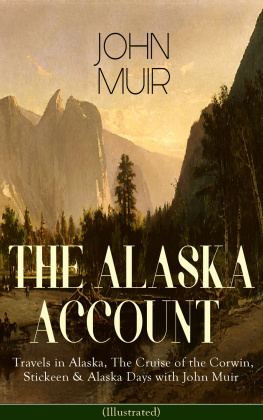KIM HEACOX is an author, photographer, musician, and climate change activist who writes opinion-editorials for the Guardian, the Washington Post, and other high-profile publications, always in defense of the natural world. His books have received starred reviews from Kirkus, Publishers Weekly, and Booklist. His 2015 novel, Jimmy Bluefeather, is the only work of fiction in more than twenty years to win the National Outdoor Book Award. He is the founder of the Charlie Skyhawk Band and, with his wife, Melanie, a cocreator of the forthcoming John Muir Alaska Leadership School. He lives in Gustavus, Alaska, next to Glacier Bay National Park. Learn more about him (or contact him) at www.kimheacox.com.
THE MAKING of this book was something of a glacier, luminous at times but mostly a long grind, impossible without the help of friends and the kindness of strangers. The idea came into my head more than ten years before publication but didnt land on paper until I believed I could do it.
Where did the belief come from? I think first of Carolyn Servid and Dorik Mechau and their Island Institute in Sitka, creating and hosting twenty years of writing symposia that touched the lives of hundreds, mine included. I think of Richard Steele, Michio Hoshino, and Hank Lentfer, who taught me to laugh. I think of Lynn Schooler, who in his book The Blue Bear, showed me how to write about Michio without making him into something he was not. I hope Ive succeeded as well as Lynn did.
I think of Mike Folsom, now retired from teaching at Eastern Washington University. He received my manuscript and wrote back, I too recall that trip to Montana, that encounter with the lady landowner who wanted to supervise our use of her scenery, [my] driving and semi-poetical invitations to see and look and open your pores and smell and taste and roll around in the glory of the place What a fine encounter with the better parts of what it means to be human Thank you for reaching back and reaching out. This is a good time in my life and you have made it better.
I think of Tomie Patrick Lee, the first woman superintendent of Glacier Bay National Park & Preserve (now retired), one of the best in the service, I believe, because she worked from gratitude more than from pride. I think of other park service employees past and present who have honored me with their friendship and dedicated themselves to the well-being of Glacier Bay and Denali National Parks. Some are ptarmigan who stay year-round. Others are terns who summer in Alaska and winter elsewhere. And still others are watchful ravens who play active roles in Friends of Glacier Bay and Denali Citizens Council. Bless you.
I think of Bruce Black, the first full-time ranger in Glacier Bay (195355), who watched icebergs drift into Bartlett Cove and half a century later, retired in Oregon, gave me permission to use his photograph of Joe and Muz Ibach.
I think of fellow writers, photographers, and musicians who encouraged me in this project and whose vision inspires me to believe that we can turn this machine around: Dave Bohn, Tom Walker, Kathy Moore, Doug Chadwick, Sherry Simpson, Bill Sherwonit, Dean Littlepage, Bill McKibben, Jeff Rennicke, Ian Ramsey, Allen Smith, Dan Henry, Libby Roderick, Annie Griffiths, Karen Colligan-Taylor, and Mike Taylor.
I think of my literary agent, Marianne Merola, and my editor, Holly Rubino, who saw in a manuscript a book, believed in it when others did not, and worked hard to make it the best it could be. I think about my copy editor, Jane Crosen, and her valuable corrections to the 2005 manuscript; and Ellen Urban, Ryan Meyer, Diana Nuhn, and Andy Romanoff who helped with the 2020 revision. And let me not forget Rick Rinehart, editorial director at Lyons Press, who wrote to me recently (no doubt after speaking with Holly Rubino) to tell me he intended to give The Only Kayak a second life.
I think of my elders: Bob Howe, Bill Brown, Sandy Kogl, and George Wagner, all gone now. Theyre probably the ravens I hear in the treetops. And Greg Streveler and Richard K. Nelson, the best erratics Alaska could have.
I think of Melanie, who loves the tundra and the tides and is always there for me.
I celebrate your journey, Mike Folsom wrote to me in 2004. I grieve for your journey. I trust in your heart and in your honesty and in your friends that your journey goes on well.
It will, Mike.
Thank you all.
THANK YOU, dear readers, for keeping this book alive. Its fifteen years old now, a rambunctious teenager. Hard to believe.
It began as scattered journal entries back in a mythical, mystical time when I first headed north. Many years later, by the late 1990s, Id cobbled things into a modest collection of essays held together by a life rooted in Alaska. Nothing more. Only after literary friends told me about narrative arcs and character development did I shape it into a memoir. Something French, apparently. (What did I know? Id studied the sciences.) But still, a story. One that opens in May 1979 with my arrival in Alaska as a young park ranger, kayaking with Richard Steele, a dear friend to this day, and ends in October 2003 with the birth of Linnea Rain Lentfer, my young neighbor in Gustavus, now a teenage activist (and a plaintiff in a climate change lawsuit). The epilogue finds Melanie and me on a Christmas morning kayak outing in Bartlett Cove, in Glacier Bay National Park, as we paddle through paper-thin pan ice and pastel winter light at fifteen degrees F. The day before, the high temperature had been five degrees F, so cold that fog rose off the still waters of Icy Strait.
Christmases here are seldom that cold anymore.
The book came out in the spring of 2005 to modest acclaim. It got some nice attention (chapters excerpted in Orion, Sierra, and other magazines; a profile in the Anchorage Daily News) before it quietly settled into the masses the roughly eighty thousand books published each year in the USA. I never expected it to catch fire or to be a bestseller, and it never has. As my exemplar Edward Abbey said, Most new books die the early death they so richly deserve.
Brutal but true.
Yet here it is, still breathing, used in high schools and universities across this beautiful yet divided land to explore such radical ideas as wildness, deep time, and the pioneers paradox, among others. I still get letters from readers who find some truth or clarity in these pages, and for that I am grateful. They tell me, I loved your book, The Lonely Kayak The Lonesome Kayak The Last Kayak The Forlorn Kayak The Clinically Depressed Kayak The Solo Kayak.
Those of you dedicated to the original edition will find, on careful inspection, that Ive made minor changescorrections, mostlyand that Ive moved portions of the narrative from past tense into present. I was in my forties looking back on my twenties when I first wrote this book, and those experiences, while profound, seemed a long time ago. Im in my sixties now, and somehow my youth seems more present than ever before. Life is funny that way.
The Only Kayak breezed through nine printings, one per year or so. Then, with the march of modernity, it began to be published on demand. To save storage space, I suppose. How many copies consisted of a printing? I dont know. Five? Ten? Maybe more.
As I write this, baking in the midday sun, Im uncertain if this will be the hottest summer in the past 125 years or the coolest in the next 125 years. Perhaps both. John Muirs beloved glaciers are melting away, some at a pace one hundred times faster than previously predicted.
The Arctic is on fire.
Whales are washing up on shorelines.
Iceland just held a funeral for its first glacier lost to climate change and left a warning sign to the future.


